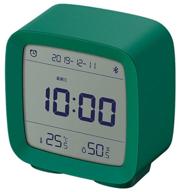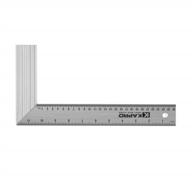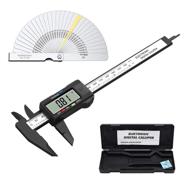
Review on 🌧️ General Tools MMD950 Moisture Meter: Pin Type or Pinless, Deep Sensing with Sensor and Remote Probe by Jimmy Jefferson

Why did I choose this meter over the FLIR MR59?
I apologize in advance to the readers for the long message, but I think that the background on which I formed my opinion will be more useful to you than just my opinion. MMD950 before making checks at home many times with another inspector. It was his device and I always had to take it out of his pocket to check my own moisture meter. about the same price (MR59 Sphere Probe Moisture Meter $199.00). I ordered Flir thinking it HAS to be better. I mean it's made by Flir right?!?! Not correct. and I couldn't be more disappointed. Both meters have excellent quality and a sense of durability, but in the field the Flir MR59 gave inconsistent and unreliable results that I just couldn't understand. Here's the difference: The General Tools MMD950 reads two types of readings with a ball probe: WME% (Wood Moisture Equivalent) and REL% (Relative Humidity based on a calibrated baseline established when the unit was turned on). Being able to do both of these types of measurements on the same surface (and needle probes if you're really unsure) allows me to thoroughly and confidently assess my clients during their investigation. I always knew it was a good gauge, but it wasn't until I put it next to the Flir that I realized how good it really is. Flir has some interesting features, but as I said, I found the readings to be random and unreliable, for example: by attaching a ball probe to a plastered wall, which I was 100% sure was dry, a reading of 37 available, good. Not 37% humidity, just 37. As far as I know, Flir calls that a "relative" value. First, about what? And if I put the probe on a plastered wall that I'm 100% sure there is moisture behind, I get a reading of 63. Okay great, now I know one wall is wetter than the other ( I knew that before I spent $200), but how am I supposed to come to a diagnostic conclusion based on the information the device provides? If 37 is dry material, how wet is 63? Other dry surfaces may read 0, which is good as some building materials inherently have lower or higher moisture levels than others. However, since Flir doesn't provide any information or charts to show high/low readings from one material to another, this thing really leaves you guessing. In any case. I'm clearly frustrated/disappointed with Flir, but felt I had to say all of this to really highlight why the General Tools MMD950 should be chosen. Thanks for your patience if you got this far lol. All to say that I like the MMD950 and would recommend it to any other multi-material moisture meter in this price range. Ignore the ball probe if you've never seen/used one, it works great and you can (like me) opt for the more traditional pin probe extension that plugs into the ball probe assembly. Hope that was helpful!
- Autocalibration
- Doubtful purchase for the elderly
New products
Comments (0)
Top products in 🛠️ Scanners & Testers

Thermometer B.Well WF-4000 white

57 Review

Qingping Qingping Bluetooth Smart Alarm Clock Green

22 Review

Detector Bosch GMS 120 Professional

28 Review

VIVREAL 4 In 1 Stud Finder Wall Scanner With LCD Display - Center Finding Beam Finder And Sound Warning For Wood, AC Wire, And Metal Studs (Black/Silver)

24 Review
Another interesting products

Kapro 307-08-TMS Try And Mitre Layout And Marking Square With Stainless Steel Blade, 8-Inch Length

18 Review

🔲 Johnson RAS-1B Johnny Square: Professional Aluminum Rafter Square, 7'', Silver - Top Quality with 1 Square

8 Review

📏 CAMWAY 6 Inch Digital Caliper with LCD Display, Electronic Vernier Caliper, 150mm Stainless Steel Feeler Gauge, Plastic Digital Caliper Set for Zero Setting Inside/Outside Diameter, Depth, and Step Measurement Tool

3 Review

📏 Johnson Level and Tool 400EM-S 12-Inch Heavy Duty Metal Combination Square for Professionals, with Inch/Metric Measurements, Silver - 1 Square

8 Review

